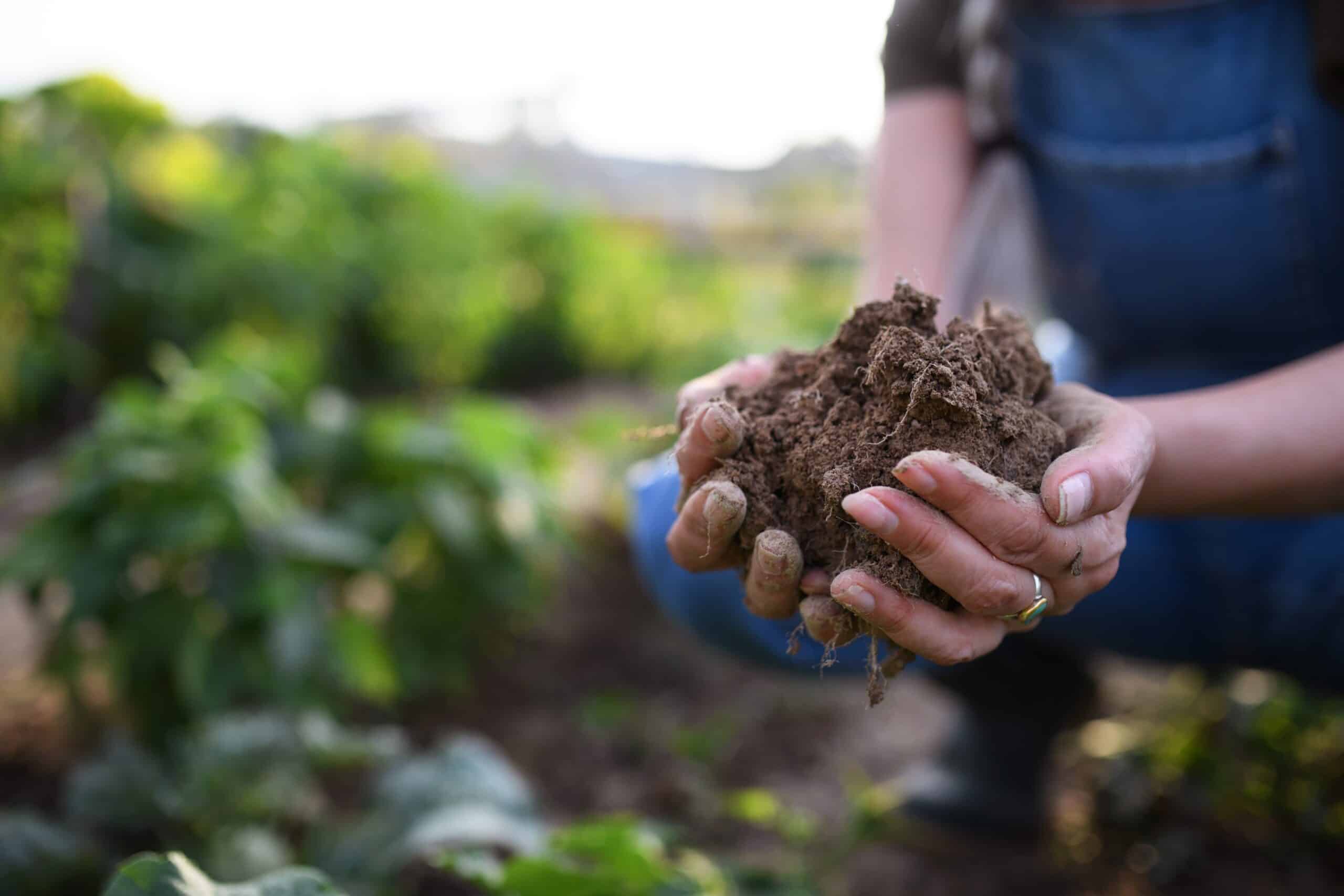
What are the Benefits of Regenerative Agriculture?
Regenerative agriculture is gaining attention as a powerful response to the environmental damage caused by industrial farming. Across the globe, soil is eroding, biodiversity is shrinking, and pesticide use continues to threaten ecosystems. Regenerative practices aim to heal the land by rebuilding soil health through a variety of techniques that prevent erosion, restore soil fertility, and boost ecosystem resilience.
As conversations around climate change, food security, and sustainability grow more urgent, regenerative agriculture is emerging as a practical and hopeful path forward. Understanding what regenerative agriculture is – and its many benefits – can help us rethink the future of farming.
What is regenerative agriculture?
There is no set definition of regenerative agriculture. Like the term “sustainable,” some definitions are robust while others are weak.
Truly regenerative agriculture is a holistic approach to farming that prioritizes soil health and biodiversity protection in order to achieve climate resilience, water conservation, carbon sequestration, and human wellbeing. A central tenet of truly regenerative agriculture is dramatically reducing the use of synthetic fertilizers and pesticides, such as Roundup weedkiller.
What is regenerative organic agriculture?
The gold standard for getting toxic pesticides and synthetic fertilizers out of our food system is organic agriculture. Organic farmers build healthy soils and grow abundant food without the use of over 900 pesticides that are allowed in conventional farming. These chemicals are prohibited by law in organic farming. Unlike the term “regenerative,” organic is enforced through a rigorous legal standard.
Research shows that diversified organic farming is regenerative. In fact, organic farming is among the most comprehensive and time-tested agricultural systems for mitigating and adapting to climate change and protecting biodiversity and human health. Research shows that organic farming can achieve the key aims of regenerative agriculture, including soil health, climate resilience, soil carbon sequestration, reduced emissions, and the protection of biodiversity, human health, and community wellbeing.
Organic diets also rapidly and dramatically reduce our exposure to pesticides. Research shows that just one week on an organic diet can reduce pesticides in our bodies by up to 95%. Eating organic food is associated with health benefits, including reduced risk of certain cancers, infertility, birth defects, allergies, and more.
Consumers who want to support healthy food systems can also look for Regenerative Organic Certified (ROC) products. ROC builds on the organic label with even stricter requirements around soil health, animal welfare, and workers’ rights.
Examples of regenerative agriculture
No till agriculture
The idea of “no-till agriculture” — the farming practice of reducing tillage and plowing —has become nearly synonymous with “regenerative.” A report from Friends of the Earth sheds light on why this is concerning. This report summarizes USDA data showing that, while no-till agriculture can be done without harmful chemicals, the vast majority of no-till systems are so dependent on herbicides to manage weeds — since a key reason farmers till their soil is to get rid of weeds — that a full one-third of the U.S.’s total annual pesticide use can be attributed to no- and minimum-till corn and soy production alone. (The term “pesticide” includes herbicides, insecticides, and fungicides.)
The report also debunks the faulty assumption that no-till is a climate solution. Not only is no-till not scientifically linked to soil carbon sequestration, it produces significant greenhouse gas emissions. The fossil-fuel fertilizers and pesticides used in conventional no-till corn and soy result in annual emissions equivalent to 11.4 million cars on the road.
Pesticide reduction
Pesticide reduction must be a central pillar of regenerative agriculture, but this is not always the case. Pesticide companies like Bayer and Syngenta have capitalized on the growing interest in soil health by promoting conventional no-till agriculture — which relies heavily on their pesticides, genetically engineered seeds, and digital agriculture platforms — as regenerative.
In fact, the cancer-linked chemical glyphosate — the main ingredient in Roundup weedkiller — is the most widely used herbicide in conventional no-till agriculture.
With billions of dollars being invested in regenerative agriculture — and the health and resilience of our food system at stake — we need to ensure that it’s guarded against this type of greenwashing. That means being clear that all regenerative agriculture definitions, initiatives, and labels must center and prioritize a transition away from toxic pesticides and synthetic fertilizers. USDA organic and ROC are the leading regenerative labels to do so.
Why are pesticides a problem?
Healthy soil is living soil. So, it should be no surprise that chemicals designed to kill are at odds with the objectives and benefits of regenerative agriculture. Research shows that pesticides are destroying the soil that grows our food. They harm the soil microbiome and invertebrates like worms and beetles that are central to building healthy soils that can sequester carbon, conserve water, and enhance farmers’ resilience to droughts and floods.
Pesticides are also decimating pollinators, which are essential to food production and healthy ecosystems.
Decades of research also show that pesticides can disrupt and derail the healthy functioning of our bodies. Commonly used pesticides are linked to cancer, birth defects, infertility, neurotoxicity, disruption of the gut microbiome, endocrine disruption, and other serious human health impacts.
Can it feed the world?
The science is clear: Feeding the world sustainably requires that we protect the ecological resources that are essential for producing food now and in the future. That means we need major investment in truly regenerative systems, like diversified organic farming.
Research consistently shows that hunger is not a problem of the overall supply of food, but results from poverty, lack of democracy and unequal access to land, water and other resources. Rather than producing more food under unequal and ecologically destructive conditions, the solution to hunger hinges on creating a more sustainable, democratic, and fair food system for all.
Is regenerative agriculture profitable?
Truly regenerative agriculture can be profitable for farmers. Reducing synthetic inputs like pesticides and fertilizers is not only possible,; it can save farmers money on costs and even increase profitability. For corn farmers, for example, fertilizer alone typically accounts for approximately 15- 25% of total production expenses, and U.S. farmers spend approximately $19 billion on pesticides annually. One study found that farming systems that employed regenerative practices including eliminating insecticide use, planting multispecies cover crops, and reducing tillage were up to 78% more profitable than more chemical-intensive conventional farm systems.
It’s also clear that protecting and fostering biodiversity by reducing the use of harmful pesticides can benefit farmers. A meta-review found that an abundance and diversity of insects in agricultural systems can improve productivity and yield outcomes. Healthy ecosystems provide a variety of important services to farmers, and reducing pesticide use maintains these ecosystems and sustains the key benefits they provide.
How to support regenerative agriculture
Consumers who want to support regenerative agriculture can look for USDA organic and Regenerative Organic Certified (ROC) products in their grocery stores. These labels are backed by federal law, and decades of research show that they’re good for the soil, the bees, our health, and the planet.
Related Posts
Ways to Support Our Work

Read Latest News
Stay informed and inspired. Read our latest press releases to see how we’re making a difference for the planet.

See Our Impact
See the real wins your support made possible. Read about the campaign wins we’ve fought for and won together.

Donate Today
Help power change. It takes support from environmental champions like you to build a more healthy and just world.